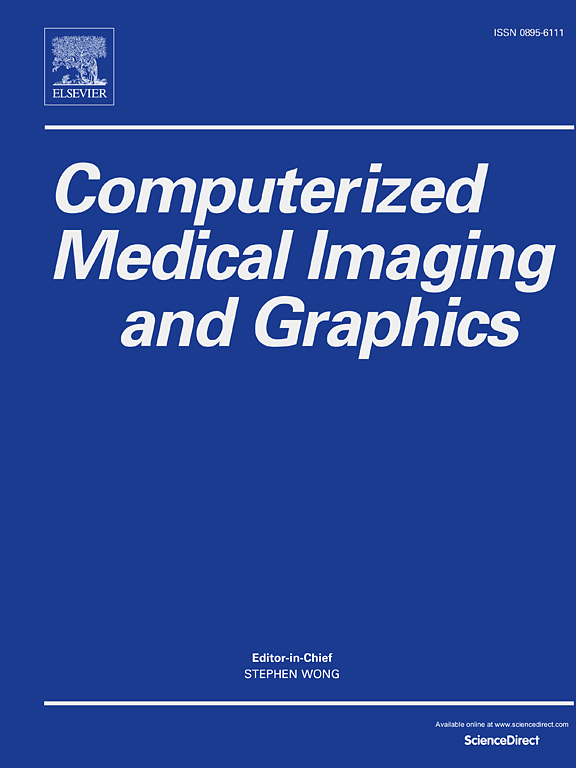基于扩散生成模型的便携式头部CT运动伪影校正。
IF 5.4
2区 医学
Q1 ENGINEERING, BIOMEDICAL
Computerized Medical Imaging and Graphics
Pub Date : 2025-01-01
DOI:10.1016/j.compmedimag.2024.102478
引用次数: 0
摘要
便携式头部CT图像由于扫描时间过长和危重病人无法保持静止,经常出现运动伪影。由于不需要CT投影数据,图像域运动校正对该应用很有吸引力。本文描述并评估了一种基于条件扩散的生成模型,用于校正便携式头部CT扫描中的运动伪影。对该模型进行训练,找出以成对的运动损坏图像为条件的无运动CT图像。该方法利用直方图均衡化来解决颅骨和脑组织的强度范围差异,并采用先进的阐明扩散模型(EDM)框架来实现更快的采样和更好的运动校正性能。与基于cnn的方法和标准扩散方法(DDPM)相比,我们的EDM框架在模拟研究和已知无运动地面真相的幻影研究中,在纠正脑组织区域和整个图像中的伪影方面更胜一筹。此外,我们对真实世界的便携式CT扫描进行了读者研究,以证明使用我们的方法可以改善图像质量。本文章由计算机程序翻译,如有差异,请以英文原文为准。
Portable head CT motion artifact correction via diffusion-based generative model
Portable head CT images often suffer motion artifacts due to the prolonged scanning time and critically ill patients who are unable to hold still. Image-domain motion correction is attractive for this application as it does not require CT projection data. This paper describes and evaluates a generative model based on conditional diffusion to correct motion artifacts in portable head CT scans. This model was trained to find the motion-free CT image conditioned on the paired motion-corrupted image. Our method utilizes histogram equalization to resolve the intensity range discrepancy of skull and brain tissue and an advanced Elucidated Diffusion Model (EDM) framework for faster sampling and better motion correction performance. Our EDM framework is superior in correcting artifacts in the brain tissue region and across the entire image compared to CNN-based methods and standard diffusion approach (DDPM) in a simulation study and a phantom study with known motion-free ground truth. Furthermore, we conducted a reader study on real-world portable CT scans to demonstrate improvement of image quality using our method.
求助全文
通过发布文献求助,成功后即可免费获取论文全文。
去求助
来源期刊
CiteScore
10.70
自引率
3.50%
发文量
71
审稿时长
26 days
期刊介绍:
The purpose of the journal Computerized Medical Imaging and Graphics is to act as a source for the exchange of research results concerning algorithmic advances, development, and application of digital imaging in disease detection, diagnosis, intervention, prevention, precision medicine, and population health. Included in the journal will be articles on novel computerized imaging or visualization techniques, including artificial intelligence and machine learning, augmented reality for surgical planning and guidance, big biomedical data visualization, computer-aided diagnosis, computerized-robotic surgery, image-guided therapy, imaging scanning and reconstruction, mobile and tele-imaging, radiomics, and imaging integration and modeling with other information relevant to digital health. The types of biomedical imaging include: magnetic resonance, computed tomography, ultrasound, nuclear medicine, X-ray, microwave, optical and multi-photon microscopy, video and sensory imaging, and the convergence of biomedical images with other non-imaging datasets.

 求助内容:
求助内容: 应助结果提醒方式:
应助结果提醒方式:


